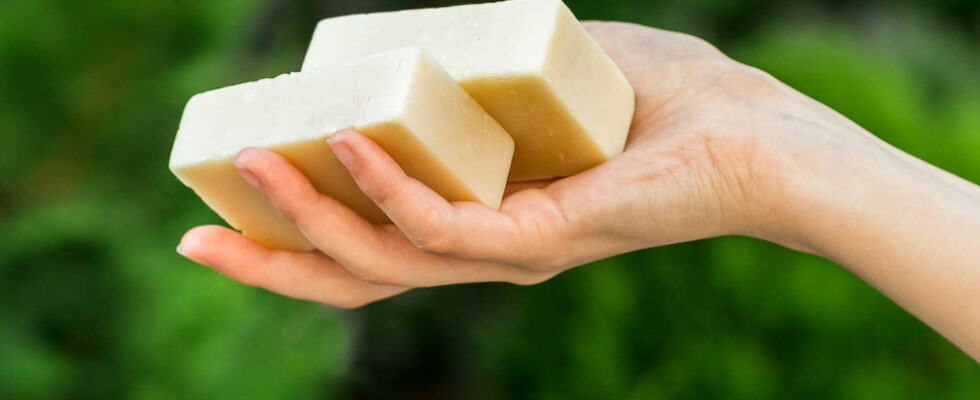Solid soap can also be an ally in the garden! Here’s how to use it to get results.
Whether you have a lawn, a large terrace or flower pots on a balcony, you must regularly encounter this problem. Small creatures or insects come to invade your garden and your plants. Keeping away these unwanted visitors can be a complex task, especially for those who do not want to use chemical products that can pose a risk to pets and children, but also to the environment. And this is where the famous tips with less aggressive, but just as effective products come in.
Among the multitude of tips and tricks for maintaining a garden, one of the most surprising is the use of solid soap. While this may seem unusual at first, many seasoned gardeners use this method to achieve impressive results.
One of the main reasons gardeners place bar soap in their flowerbeds and vegetable gardens is because it repels pests. Deer, rabbits, and even some insects find the smell of soap unpleasant. By placing pieces of soap around your plants, you can deter these animals from nibbling on your precious crops. For example, you can stick a bar of soap on a stick and plant it next to your plants or in your vegetable garden. The soap creates an odor barrier that discourages intruders without harming the environment.
Solid soap can also be an ally against certain insect pests. Aphids, for example, hate the smell and texture of soap. One trick is to grate a little solid soap and dissolve it in water to obtain a soapy solution. By spraying this solution on your plants, you create a protective layer that repels unwanted insects. In addition, this mixture is safe for plants and respects the environment, unlike many chemical insecticides.
But be careful, this method also has its limits. This solution works, but never for long. Soap as a repellent only works until it is washed away by rain or high humidity levels during the warmer months. Another problem to consider is that soap will not work to eliminate pests, because it does not kill insects or animals, it only acts as a repellent.
